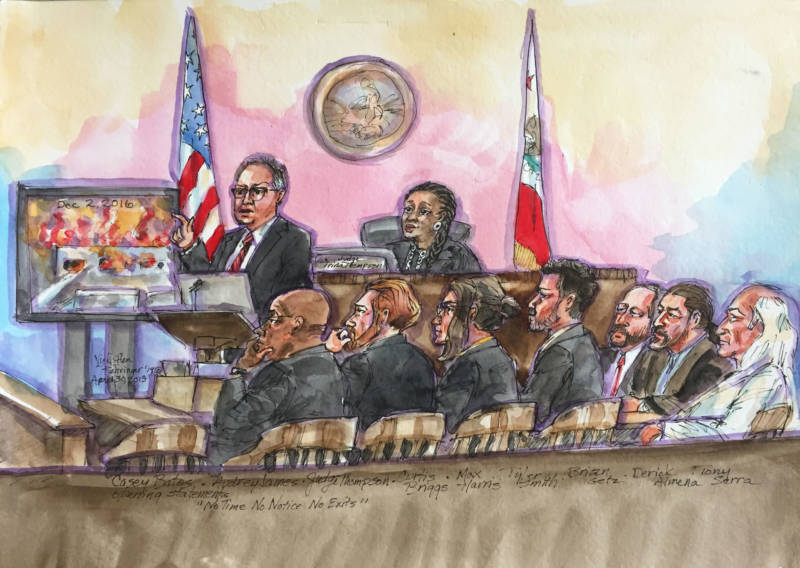Prosecutor Casey Bates, an assistant district attorney for Alameda County, said during his opening statement that the three dozen people couldn't escape the illegally converted East Oakland warehouse "because there was no notice, no time and no exits."
Some attending the trial sobbed at times and shared boxes of tissues before court went into lunch recess.
The warehouse nicknamed "Ghost Ship" caught fire during an electronic music party, killing 35 concertgoers and one resident.
"They paid money, but didn't survive because there was no notice of smoke and flames," Bates said before the jury.
Faulty electrical wiring was suspected, but the official cause of the fire was never determined.
Defense attorney Curtis Briggs, who represents Max Harris, said evidence will prove arson as the cause of the fire, saying "the people who lit the Ghost Ship on fire are not on trial. The owners are not on trial. The people who threw the party on Dec. 2 are not on trial."
He said at least three people will testify who say they saw several strangers flee the warehouse just before the fire, including one witness who said they saw seven to 10 Latino men in dark clothes running near the warehouse claiming they boasted of setting up a wooden obstruction in the building.
Bates outlined the case against master tenant Derick Almena and Harris, often described as Almena's "second-in-command," saying they had converted the commercial warehouse into a residential and performance space stuffed from floor to ceiling with flammable materials. Bates showed images of living spaces with walls made out of pianos or old doors and windows used to mark off rooms.
Bates said the Ghost Ship wasn't outfitted with the types of safety precautions required in such a converted warehouse, including sprinkler systems, fire alarms and well-lit, easily identifiable exits.
Bates said that as an arts space, people brought in wooden materials, solvents, paints, power tools and other equipment, creating walls made out of non-traditional materials to create residential spaces. No sheetrock was used, which could have slowed a fire.
"Floor to ceiling, it was non-conventional flammable material throughout," Bates said. He said the only running water to the facility was supplied by a garden hose. He said there was one fire detector in one of the living spaces that no one heard the night of the fire.
Bates said Almena discovered the warehouse on Craigslist in 2013 and co-signed for the building with Nicholas “Nico” Bouchard. But Bouchard quickly became concerned about alterations to the warehouse Almena had been making, Bates said. Bouchard moved out of the building within weeks and attempted to get out of the lease, which Eva Ng, the daughter of warehouse owner Chor Ng, wouldn’t allow.

